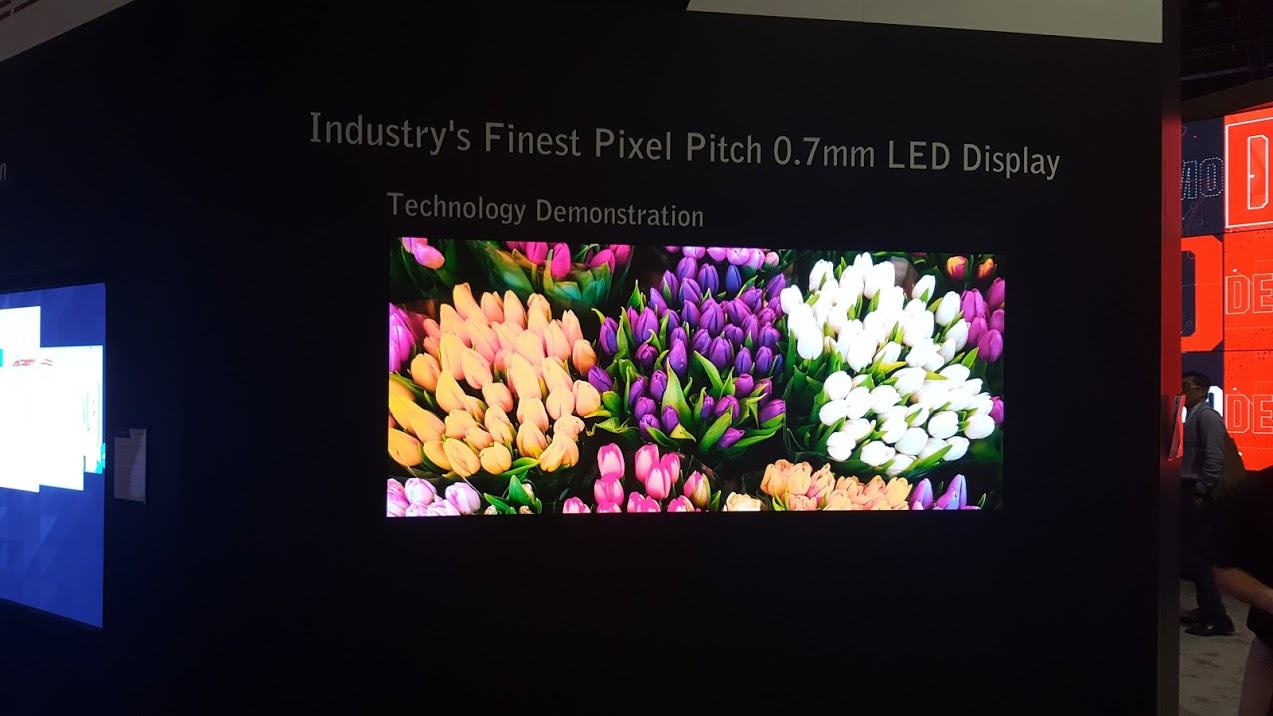
InfoComm 2017: Day One Impressions
June 15, 2017 by Dave Haynes
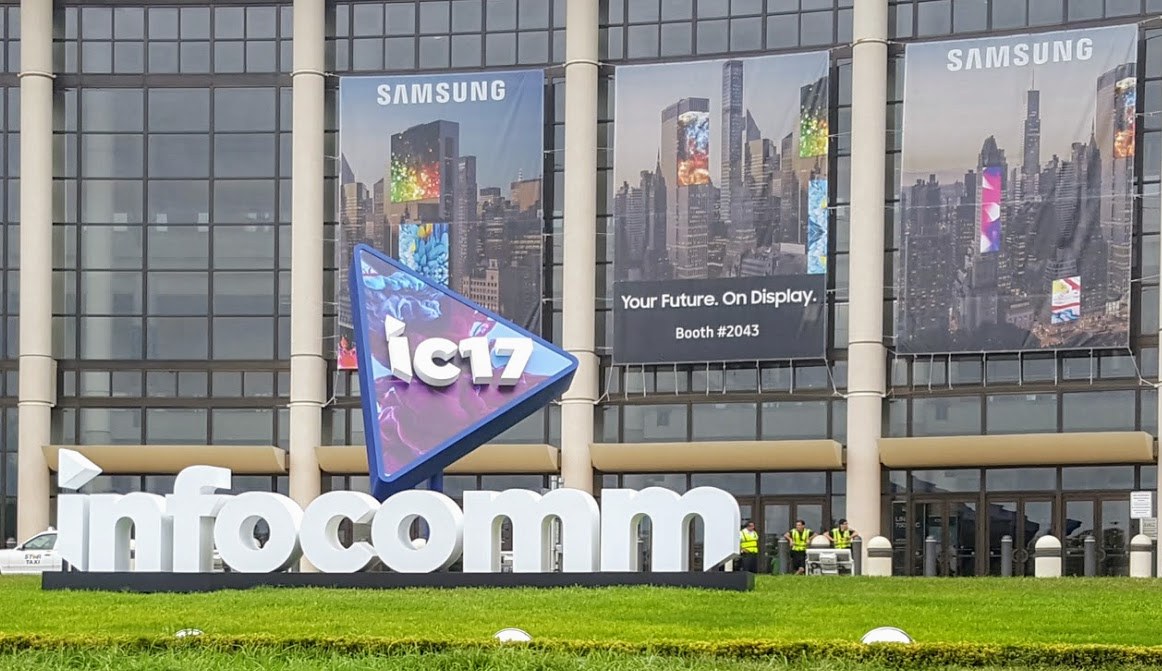
It was readily apparent to just about anyone that the big InfoComm pro AV trade show down in Orlando this week would include a lot of exhibit hall real estate filled up by LED display manufacturers. But I’ve never seen as many of them as I saw here – not even at the version of InfoComm staged right in China.
There are dozens of them here, marketing product that ranges in quality from spectacularly crisp to the wondrously crappy outdoor stuff that strip malls put in to tell motorists Gloria’s Nails is now open Sundays.
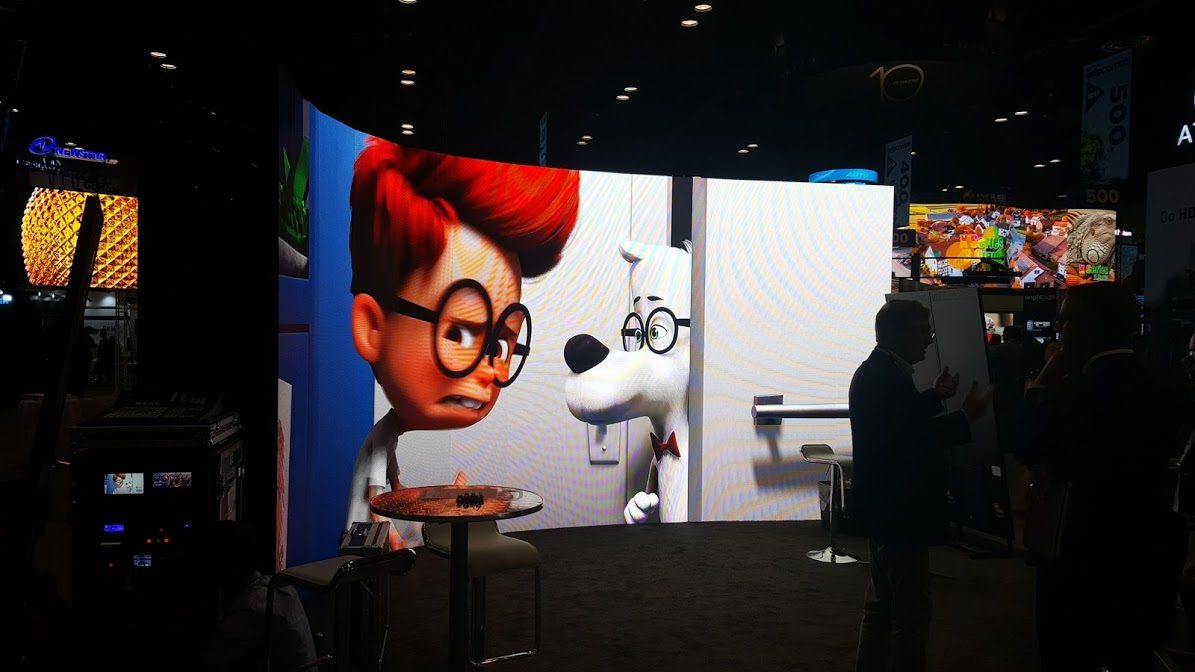
What’s also apparent is that the premium Narrow Pixel Pitch displays that started show up about four years ago are now so widely made and marketed they are a commodity. This really struck home when I chatted with D3, a New York LED company that has indoor and outdoor installs in premium retailers and Times Square, and did that amazing Netflix lobby project. The company didn’t even have an LED module – never mind a full, switched-on display, in its booth.
I asked why, and Meric Adriansen, a D3 Managing Partner and the technical lead for the company, said it was all a bit pointless to compete only on who can generate the prettiest, most spectacular visual on the show floor. There’s much more to fine pitch LED jobs than just the display layer, he said, pointing to the media server/control system in their booth that’s about the size of mini-fridge. It also, of course, saves a PILE of money to not bother shipping in and setting up an LED wall, but based on the business they do with a Fortune 50 company they’re not allowed to mention, budget would not be an issue.
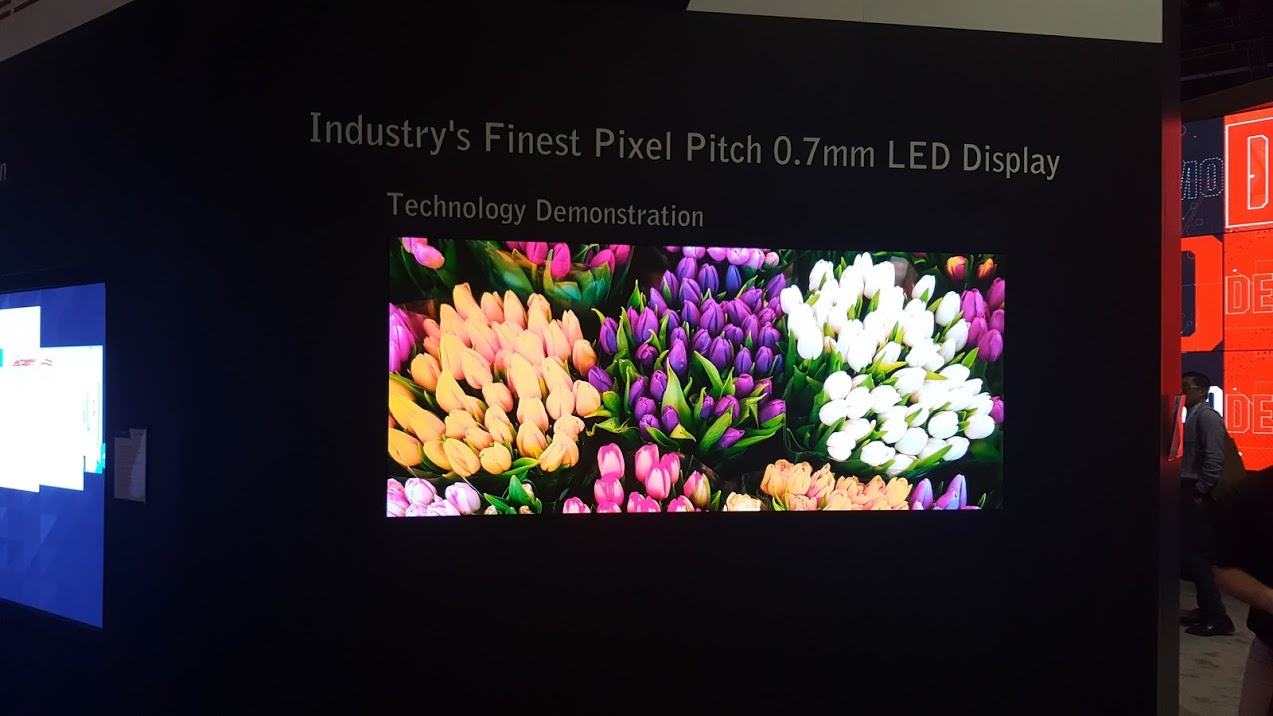
The fine pitch displays around the show floor are very impressive. Leyard, for one, was showing a 0.7 mm display, and not just one clock the size of a brown envelope. The mainstream display guys like Samsung, LG and NEC all have fine pitch stuff, and there are a lot more China-based companies with very large displays in very large booths with very large staffs.
The other thing that struck me about the show is how LED is starting to look pretty good for transparent displays, and for standalone digital posters. The mesh LEDs that can be placed in windows and still let light in have found a balance between the metal work and see-through properties that works. And I saw numerous pedestal/totem products that are LED instead of LCD, which has forever been the display tech used for those things.
The LCD-centric display manufacturers all have very large, very active booths at the show. At just about any trade show I attend, the Samsungs and LGs are at the front of the halls and the first companies you see when walking inside, but here, they take up real estate in the main aisle that runs forever from one end of the hall to the other.
The pro LCD displays they all sell have long been commodities and I’d question whether anyone other than video nerds could really pick out the differences between different series with different operating specs. They ALL look great, across ALL manufacturers.
What’s different are new or still emerging technologies.
For LG, that’s OLED, and the company is still pushing hard on that, and drawing crowds for its wavy set-ups and impossibly thin OLED wallpapers. Interestingly, Transparent OLED is gone. The buzzy and beautiful tech is no longer being made and marketed, I understand. It was VERY expensive, and have been told there were technical issues, as well. Samsung stopped marketing transparent last year and Planar isn’t showing them either.
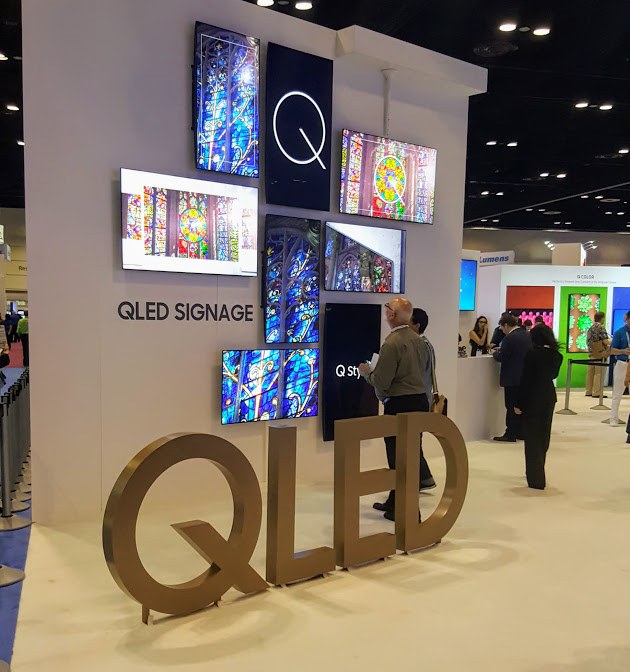
For Samsung, the big feature this year is QLED – which is short for Quantum Dots LCD. If you are wondering what the heck that is, it is a layer in the “sandwich” of layers that make up an LCD display that amplifies the image and results in really color-accurate visuals and the sort of rich, sumptuous video that has made people who see OLEDs ooh and aah. QLED doesn’t quite get to the true blacks of OLED, but it’s close.
Both technologies are very expensive and not destined anytime soon for QSR menu jobs.
The other tech Samsung has started showing is what they are calling the 5th generation of its Smart Signage platform, which is less about the display and more about the computers inside running on Tizen 3. The 4th gen runs on version 2.4, so as with any operating system, a new version tends to be optimized and higher performing.
I didn’t have a lot of time on the floor because I was running or sitting in on a series of sessions called The Big Canvas. We’ve had great 90-minute education sessions with the people behind AT&T’s store in San Francisco, Dubai’s CityWalk, eBay’s new Silicon Valley HQ and the Salesforce headquarters lobbies, also in San Francisco. What came out of that is how data-driven content – both as information and art – was central to most of those jobs.
It’s great to see companies pushing the possibilities of that, and clients putting the dollars in. What was done in those jobs will finds its way into a lot of more mainstream work.
Today is stupid-busy for me – two more sessions, an interview thingie on the event’s CenterStage, podcast interviews, and more – so my time on the floor will be pretty limited. Friday better.
If you are in Orlando, see you around.



Great perspective as always.
That transparent is a hot item when it’s HD.
How did you like the moving LED panels at booth 353?
Thanks for the concise but informative update! I feel like I was there.